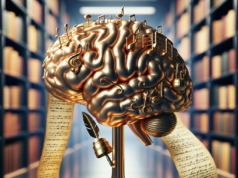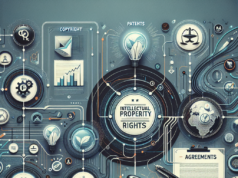In an increasingly digital world, the accessibility of legal forms remains a critical yet often overlooked issue that affects countless individuals seeking justice. Legal documents serve as gateways to rights and protections, yet many people encounter significant barriers when attempting to access or understand these forms. This article delves into the hidden challenges surrounding legal form accessibility, emphasizing the importance of equitable access to legal resources, particularly for marginalized communities.
Understanding Legal Form Accessibility: An Overview of Current Challenges
Legal form accessibility refers to the ease with which individuals can obtain, comprehend, and utilize legal documents necessary for navigating the justice system. Despite advancements in technology and a growing awareness of the need for accessible resources, many legal forms remain complex, jargon-laden, and difficult to locate. The challenges are compounded by disparities in education, language proficiency, and digital literacy, which can create insurmountable obstacles for those unfamiliar with legal processes. Furthermore, the lack of standardized formats and the inconsistency in the availability of forms across jurisdictions exacerbate the problem, leaving many individuals without the necessary tools to advocate for their rights.
The Importance of Accessible Legal Forms in Promoting Justice for All
Accessible legal forms are vital for ensuring that all individuals, regardless of their socio-economic status or background, can effectively engage with the legal system. When legal documents are designed with accessibility in mind, they empower individuals to understand their rights and responsibilities, thereby promoting a more equitable society. Accessible forms can help bridge the gap between legal professionals and the public, fostering greater trust in the justice system. Moreover, when individuals can easily access and comprehend legal resources, they are more likely to seek help when needed, ultimately contributing to a more just and fair legal landscape.
Identifying Hidden Barriers: Common Obstacles to Legal Form Accessibility
Despite the critical need for accessible legal forms, various hidden barriers persist. One of the most significant obstacles is the use of legal jargon, which can alienate individuals without a legal background. Additionally, many legal forms are only available in English, limiting access for non-English speakers. The digital divide also plays a crucial role; individuals without reliable internet access or digital literacy skills may struggle to obtain necessary forms online. Furthermore, physical accessibility issues can arise for individuals with disabilities, who may find it challenging to navigate traditional legal offices or access printed materials. These barriers collectively hinder the ability of many to engage with the legal system effectively.
The Impact of Inaccessible Legal Forms on Marginalized Communities
The consequences of inaccessible legal forms are particularly pronounced within marginalized communities. Individuals from low-income backgrounds, racial and ethnic minorities, and those with disabilities often face compounded challenges when trying to access legal resources. Inaccessible forms can lead to missed deadlines, improper filings, and ultimately, the denial of justice. For instance, a single missed court date due to confusion over a legal form can result in severe repercussions, such as loss of custody or eviction. This systemic inequity not only perpetuates cycles of disadvantage but also undermines the foundational principle of justice for all, as those who are already vulnerable are further marginalized by an inaccessible legal system.
Innovative Solutions: Enhancing Accessibility in Legal Documentation
To address the pressing issue of legal form accessibility, innovative solutions are emerging that prioritize user-friendly design and inclusivity. Legal tech companies are developing platforms that simplify legal documents, using plain language and intuitive layouts to enhance comprehension. Additionally, organizations are advocating for the creation of multilingual resources to cater to diverse populations. Community legal clinics are also playing a pivotal role by offering workshops and resources that educate individuals on navigating legal forms. Furthermore, incorporating feedback from users, particularly those from marginalized communities, can lead to more effective and accessible legal documentation. These initiatives represent a significant step toward dismantling barriers and fostering a more inclusive legal environment.
Future Directions: Advocating for Change in Legal Form Accessibility Standards
Looking ahead, it is imperative to advocate for comprehensive changes in legal form accessibility standards. Policymakers, legal professionals, and advocacy groups must collaborate to establish guidelines that prioritize accessibility in all legal documentation. This includes mandating the use of plain language, ensuring multilingual availability, and implementing universal design principles that accommodate individuals with disabilities. Additionally, ongoing training for legal professionals on the importance of accessibility can foster a culture of inclusivity within the legal field. By prioritizing accessibility in legal forms, we can work towards a justice system that truly serves all individuals, regardless of their background or circumstances.
The issue of legal form accessibility is a pressing concern that requires immediate attention and action. By understanding the challenges, recognizing the importance of accessible resources, and advocating for innovative solutions, we can pave the way for a more equitable legal landscape. It is essential that we continue to address the hidden barriers that prevent individuals from accessing justice, ensuring that the legal system is truly accessible to everyone. Only through collective efforts can we hope to dismantle the obstacles that hinder justice and promote a fairer society for all.










